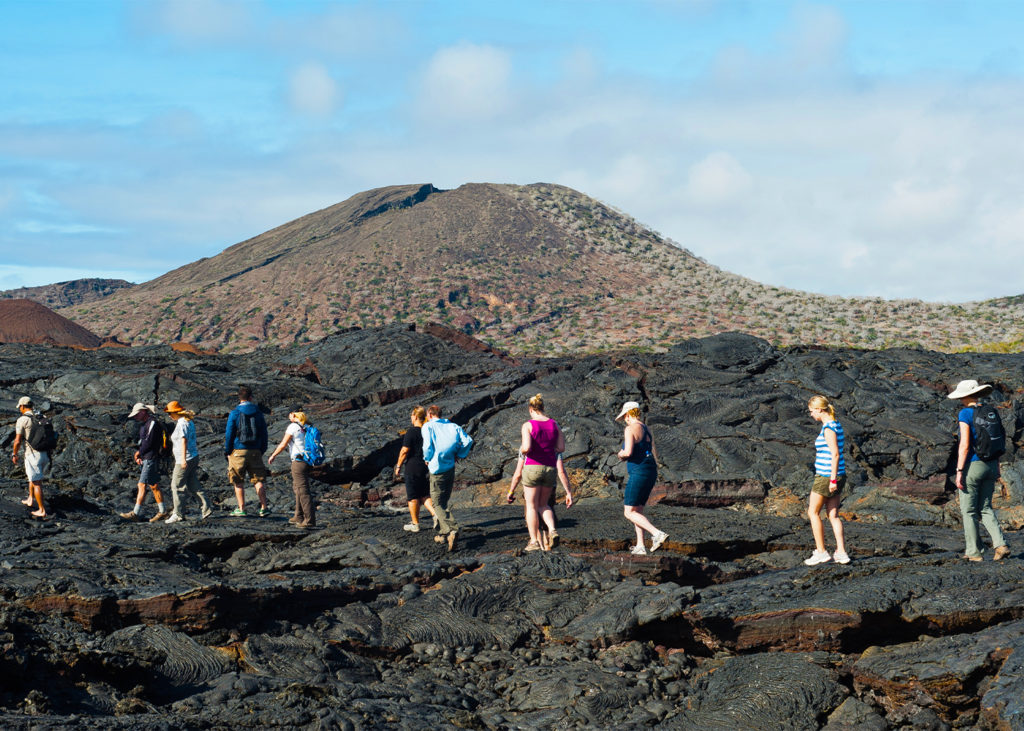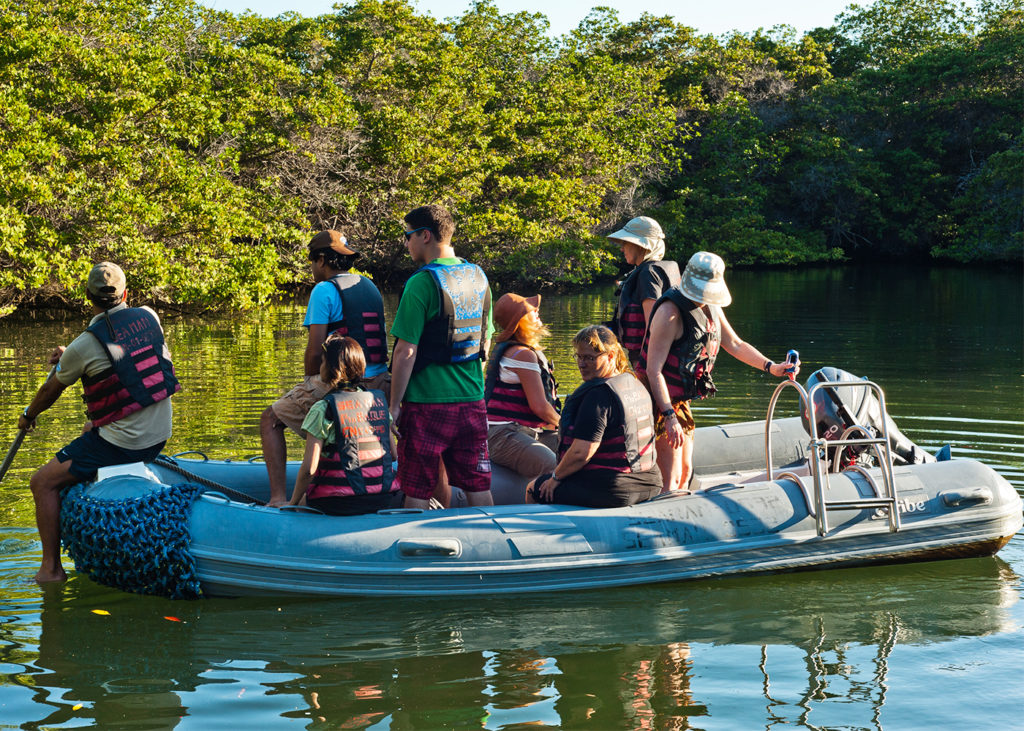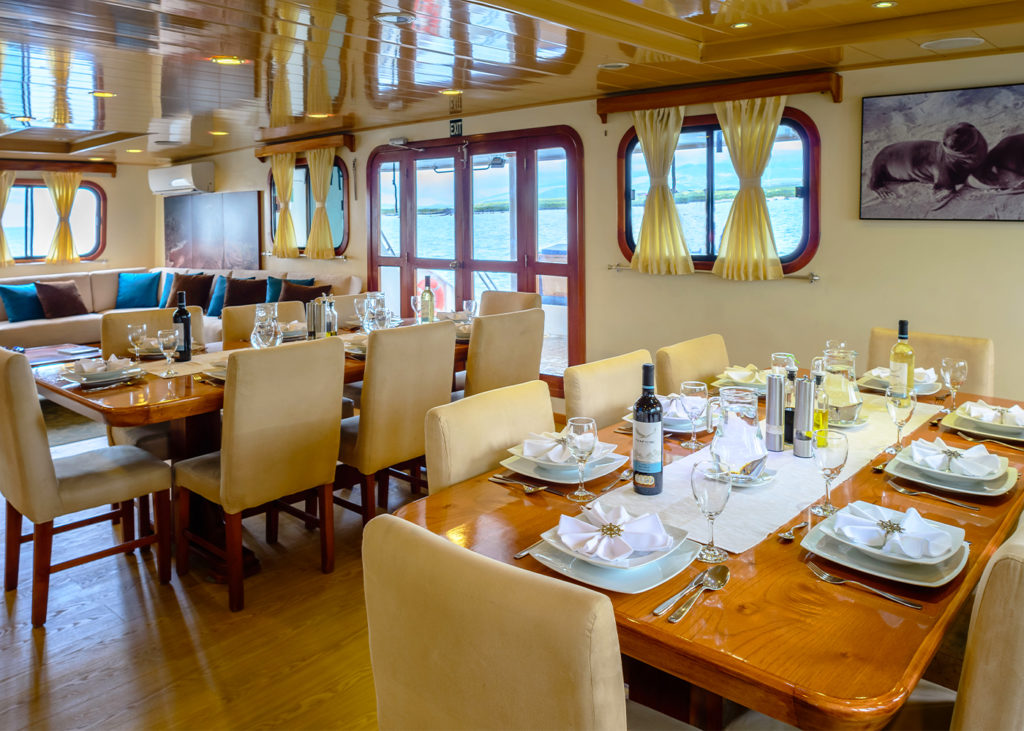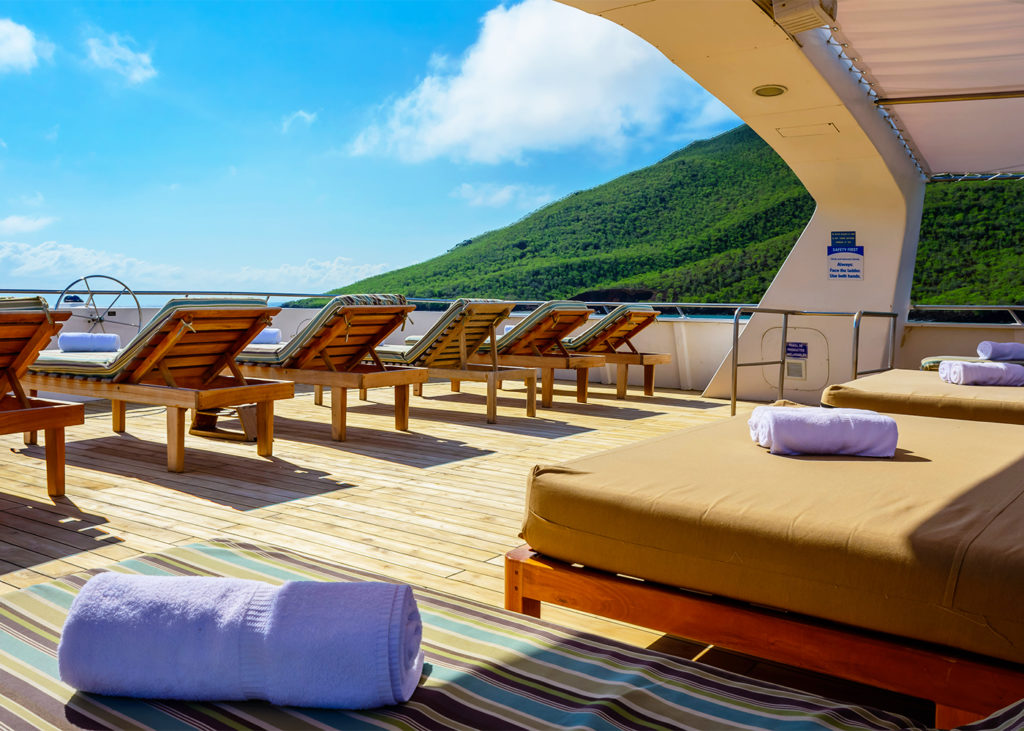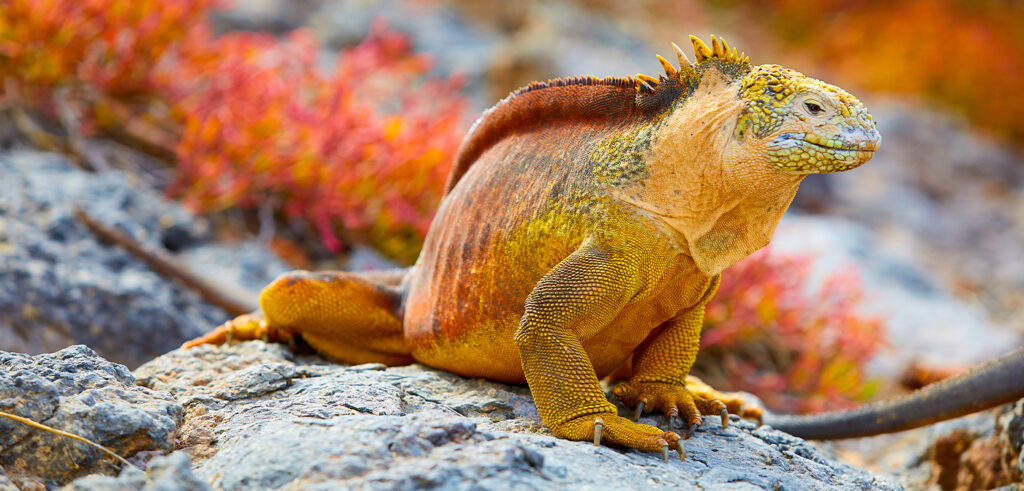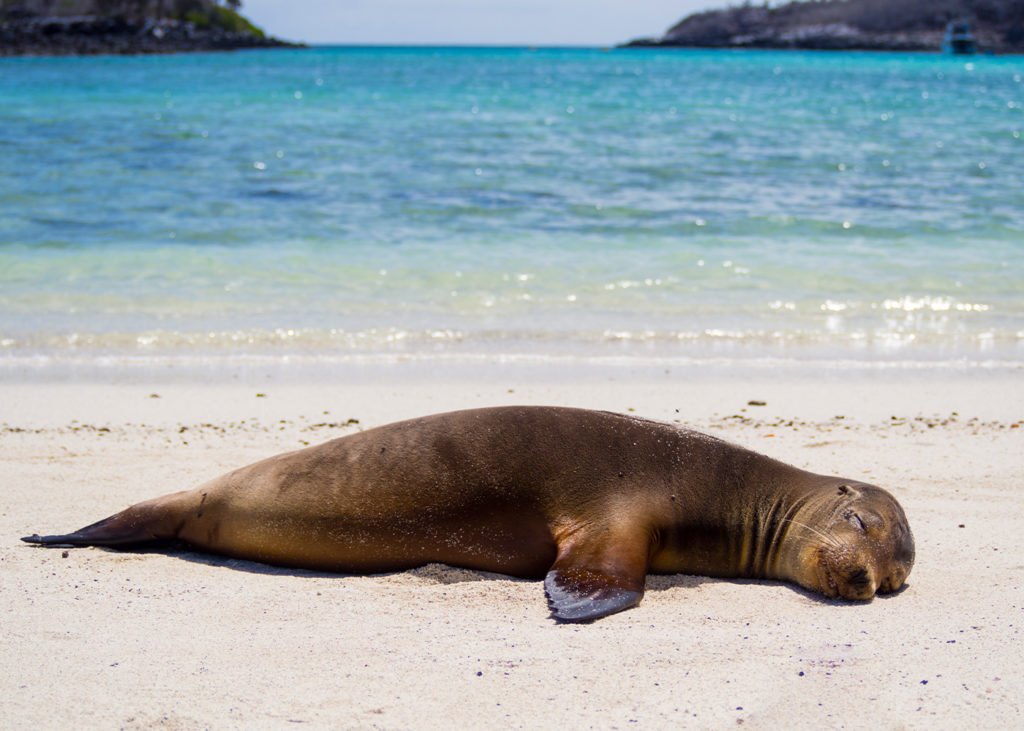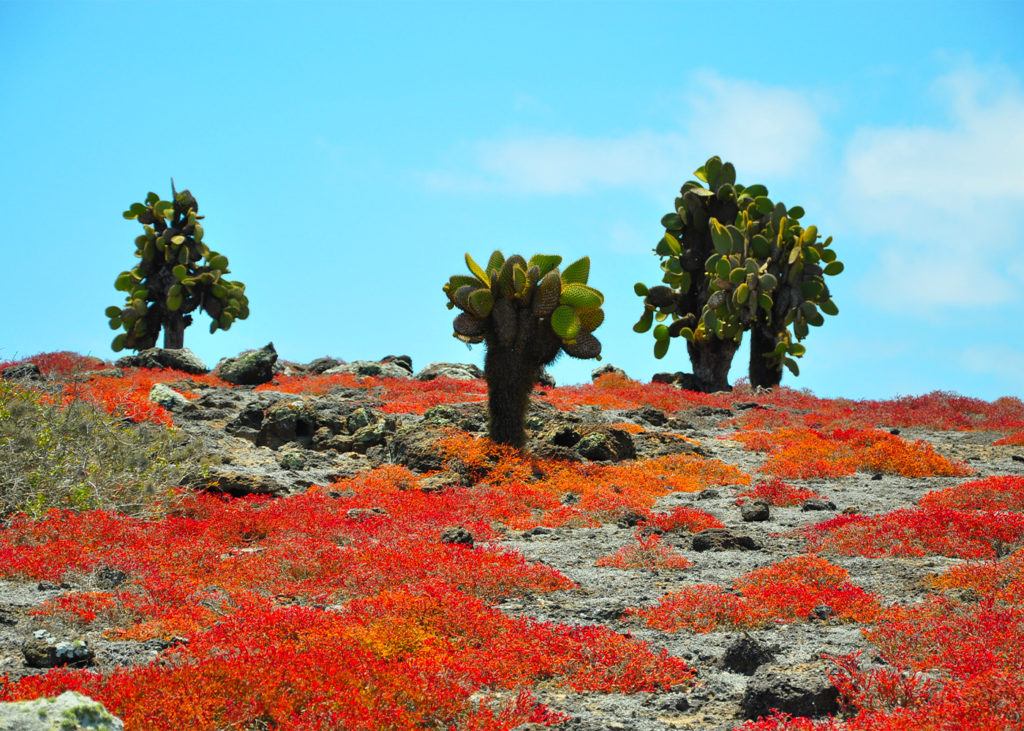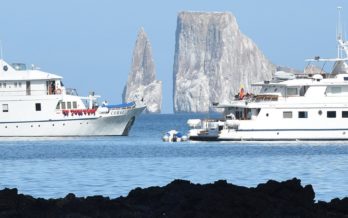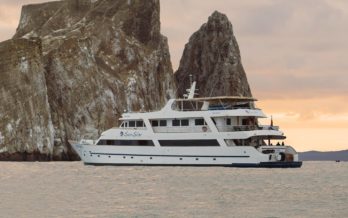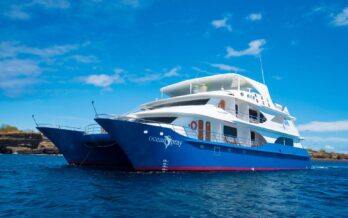Cruise Overview
M/C Galapagos Seaman Journey is a first class catamaran that began sailing the Galapagos Islands in January 2008. It is a Boutique Yacht Catamaran offering superior comfort, size, style, and stability. The Galapagos Seaman Journey makes it possible to enjoy several cruises in the Galapagos with different itineraries that include amazing land tours on most of the Galapagos Islands. During these Galapagos Cruises, guests encounter many endemic species like Galapagos Giant Tortoises, Penguins, Land and Marine Iguana´s, Frigate Birds, Blue Footed Boobies, and much more!
During one of the cruises each guest can enjoy the well-furnished areas offering comfort and privacy. Galapagos Seaman Journey has a maximum capacity of 16 passengers allowing both intimacy and camaraderie at the same time. We have several resting areas for those who are looking for a quiet place to relax during their Galapagos trip with family and friends in the lazy mid-afternoon sun, or likewise after a busy day of swimming, snorkeling, kayaking, or walking on one of the Galapagos Islands.
To check out the gorgeous ocean views with fellow shipmates, guests can spend some time on the liveaboards’ spacious sundecks. Whether they feel like getting a little sun on their vacation, or want the best place to enjoy the gorgeous sunsets over the Galapagos Islands, our sundecks are the best place to be.
For the adults who might want to relax and kick back, we offer a great bar and lounge area where they are served by our bartender who will be happy to attend to all their needs and desires whilst you relax.
The M/C Galapagos Seaman Journey, another jewel from the well-known Galapagos Journey Fleet, the perfect combination of adventure, comfort, service and excellence!
Cabin Types
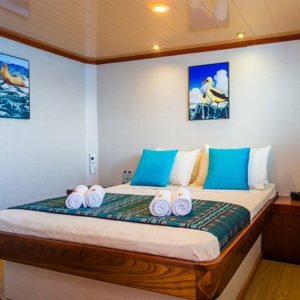
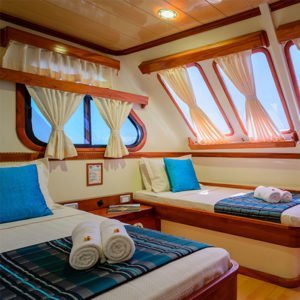
Itinerary A
Departs Thursdays
Arrive at Baltra Airport, and be met and escorted by a personal naturalist guide to the private transport. While the crew handles your luggage, you will be transferred aboard the M/C Seaman Journey via “panga”.
Once settled, the cruise will sail to Bartolome Island, nestled across from Sullivan Bay at an altitude of 114 meters (approx. 375 feet), where you can observe the stunning Volcanic cones, lunar-like craters, lava fields and impressive Toba-formed pinnacle eroded by the sea. From the island, watch the marine turtles, sea lions and Galapagos penguins thrive in their unique habitat.
Enjoy Mosquera Islet, one of the smallest islands in the Galapagos, exploring its beautiful white sand beach and transparent turquoise water. Landscape photography is highly recommended here, especially in the golden light conditions of the mornings and late afternoons.
Travel on the M/C Seaman Journey to North Seymour Island to watch the breath-taking Galapagos native bird life, with the frigatebirds nesting in the low shrubs, as well as the swallow-tailed gulls perched on the cliffs. Observe the blue-footed boobies perform their delightful courtship dances only mere meters away from the trail.
Today will take you to Darwin Bay, starting in El Barranco along the bay’s southern edge. This 1.5km trail will take you through volcanic terrain, usually requiring 2 hours at a leisurely pace. Observe more unique birdlife in the form of red-footed and masked boobies nesting in close proximity. The dramatic coastline can be observed through much of the trail, where you can spot fur sea lions resting on the rocks. Continue exploring the tidal pools along Genovesa Island, being an excellent snorkelling spot to encounter marine life such as reef-trip sharks, sea turtles and hundreds of distinct, colourful fish. Sea Kayaking is also possible.
Begin your day at South Plazas, east of Santa Cruz island. Observe the hybrid iguanas, distinct by their black/gray colour, with the crest of a land iguana and face and tail of a marine iguana. The large presence of these interesting lizards on the island is due to the substantial population of tunas, their favourite food.
Continue to Santa Fe, disembarking in the crystal-clear waters, where you will explore a trail that leads you past the giant prickly pear cacti. There are great possibilities for snorkelling with playful sea lions and tropical fish.
Your final morning in the Galapagos takes you to the David Rodriguez Tortoise Center, a conservation jewel dedicated to the protection of San Cristobal’s native giant tortoises. It is a scenic 40 minute drive from the port through the island’s highlands. Here you will drive past the remarkable Chelonoides chathamensis tortoises in their carefully maintained natural habitat.
Following this tour, you will be transferred to San Cristobal airport for your departure flight.
Itinenary B
Departs Mondays
Arrive at San Cristobal Airport to meet your guide, who will assist with your luggage and escort you to the panga that will transfer you to the M/C Seaman Journey. Continue to the Gianni Arismendy Environmental Interpretation Centre to learn about the geological and human history of the island, as well as its natural history and conservation efforts towards that. This is the oldest natural history museum in the Galapagos, striving to preserve the archipelago’s natural ecosystem.
Visit Punta Pitt on the eastern end of San Cristobal island, and explore a 1.4km trail from Oliviana beach to the hilltop, where you can observe the vibrant colour of the landscape formed from different types of lava. Punta Pitt is one of the few places you can witness all three species of boobies — blue-footed, red-footed, and masked — in one place.
Continue to Lobos island, a small islet known for its sea lion population, which frolic on the white sand beach. The island offers stunning snorkelling opportunities.
Visit Gardner Bay, a perfect place for snorkelling or kayaking, or perhaps a spot of sunbathing. Sea lions laze on the shore here, while harmless reef sharks can be seen in the clear ocean. Visit Punta Suarez in the afternoon, with its high cliffs and abundance of sea birds that can be seen soaring above.
Explore Isla Floreana at Punta Cormorant for an impressive flamingo lagoon situated between two tuff lava cones, that is also frequented by common stilts, checked pintail ducks and other shorebirds. Visit both the green beach made up of olivine crystals and the white flour sand beach. In the afternoon, visit Post Office Bay. A wooden barrel was once placed here for use as a manual post office, a system that still works today, while the lookout offers exceptional panoramic views.
Start your visit to the Fausto Llerena Breeding Centre at the Galapagos National Park Service information booth. Follow the trail to the Van Staelen Interpretation Centre, then to the breeding centre. An elevated wooden path allows you to observe the giant tortoises of Santa Cruz and Espanola Islands.
Transfer to Baltra Airport for your flight back to the mainland.
Itinerary C
Departs Fridays
Upon arrival at Santa Cruz island, you will be met by a guide who will handle your luggage before taking you to the bus for your ferry across the Itabaca Channel. There you will visit Ranch Manzanillo or a similar farm on Santa Cruz Island. Enjoy a picnic lunch and short walk . At Santa Cruz, observe wild Galapagos tortoises, explore lava tubes, sinkholes and craters in the magnificent highlands before boarding the M/C Seaman Journey yacht.
Visit Puerto Moreno on Isabela island’s west coast, at the entrance to the Bolivar channel. Follow a trail passing by a Pahoehoe lava flow into coastal lagoons. Observe the stunning bird life on the island, including blue footed boobies and flightless cormorants. Afternoon visit to Fernandina Island and Mangle Point, for a beautiful panga or zodiac ride through mangrove groves. You can see sea lions, tortoises, pelicans, rays and numerous sea birds on this journey.
Visit Urbina Bay, at the base of Alcedo Volcano on Isabela’s west coast. This area offers great snorkelling opportunities and features a 3.2km trail. Look out for iguana burrows and red and blue lobsters, as well as Galapagos penguins when snorkelling. You can also witness the famous Darwin finches and land iguanas, as well as Giant Tortoises.
Continue to Tagus Cove, west of Darwin Volcano, where you can observe pirate graffiti, evidence of the archipelago’s rich human history. You can visit a cave with engravings and inscriptions from the 1800s. Follow a trail, allowing you to spot finches and mockingbirds before coming to a stunning lookout above Darwin lake and the bay below.
Espinoza Point is a place famous for its large colonies of marine iguanas, and as the habitat of unique species like the flightless cormorant, Galapagos penguin, Galapagos hawk, and Galapagos snake. Continue to Vicente Roca Point on Isabela Island’s northwestern coast, featuring high cliffs and stunning lava formations. Enjoy a panga ride and snorkelling adventure alongside penguins, blue-footed boobies, terns and sea lions.
Espumilla beach is located on the northern coast of Santiago Island in James Bay. During the last presence of the El Niño phenomenon, one of the two lagoons in this site, underwent a process of sedimentation, thus causing the disappearance of a representative colony of flamingos. One of the main attractions here is the palo santo forest. The beach is an important site for nesting marine turtles. The second part of the day visits Puerto Egas. This is a black sand beach that is located at the west side of the island and is the main attraction of the island. The volcanic tuff deposits have favored the formation of this special black sand beach which will surely impress visitors.
Rábida Island is unique because the red color of the rocks and sand. The volcanic material in this island is very porous and external factors such as rain, salt water, and sea breeze have acted as an oxidizing agent. A short walk along a trail lead visitors to a coastal lagoon behind the beach which permits them to observe the land birds such as finches, doves, yellow warblers, and mocking birds. At the lagoon there is a colony of flamingos. The Chinese hat is a small islet (1 sq km) located just off the southeastern tip of Santiago Island. It is a recent volcanic cone, shaped like a Chinese hat when seen from the north side. On the west one can see lava formations, formed under the sea and raised upward. This is why coral heads are found on the lava. This is an excellent visit for the interpretation of geological features such as lava tubes and lava flows. The landscape is covered by sea lion colonies, marine iguanas, and Galapagos penguins.
Enjoy a dinghy ride to Black Turtle Cove on Santa Cruz’s northern coast. The boat ride will take you through the mangrove-protected cove with the engines off. In the calm waters, you can see sea turtles feeding and mating alongside black-tip, white-tip and Galapagos sharks.
After your visit, you will be transferred back to Baltra airport for your flight back to the mainland.
Tour Inclusions
- All transfers in Galapagos
- Matrimonial/Twin Accommodation with private facilities
- All meals
- Water, coffee and tea
- All excursions as mentioned (itinerary subject to change) with English speaking naturalist guide
- Snorkeling and kayak equipment
Tour Exclusions
- Any flights to and from mainland Ecuador to Galapagos Islands
- Galapagos National Park entrance fee approx. US $100 per person
- Galapagos Transit Control Card approx. US $20 per person
- Tips
